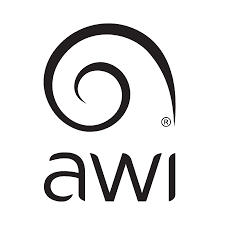 ONLY 6.5 percent of eligible levy payers voted at the 2021 Australian Wool Innovation annual general meeting, sparking concerns about the level and quality of engagement between the research, development and marketing body and its shareholders.
ONLY 6.5 percent of eligible levy payers voted at the 2021 Australian Wool Innovation annual general meeting, sparking concerns about the level and quality of engagement between the research, development and marketing body and its shareholders.
AWI confirmed today that 1161 people voted at the AGM of a potential 17,859 voters, compared to 2030 voters of 19,826 eligible growers in 2019, also a director election year.
AWI chairman Jock Laurie said 1146 valid proxy forms were lodged for the election and AGM resolutions, representing 170,000 voting rights, or 12.67 percent of the total voting rights. There were nine invalid proxy forms.
This contrasted with the 2019 results, when 2003 proxies representing 330,000 voting rights were exercised. It is not known what percentage of total voting rights were exercised in 2019.
 AWI chairman Jock Laurie was unavailable for comment today, but an unidentified AWI spokesman said AWI encouraged all shareholders to participate and made the voting process as easy as possible.
AWI chairman Jock Laurie was unavailable for comment today, but an unidentified AWI spokesman said AWI encouraged all shareholders to participate and made the voting process as easy as possible.
“It is a voluntary process and the shareholders had a choice on whether to participate and if they do who to vote for.
“This year’s director election was extensively promoted by AWI and the individual candidates,” he said.
“There was also considerable reporting in the lead up to the election.
“The result is valid and the participation rate exceeds most companies that had director elections this year,” the spokesman said.
“AWI will continue to consult with the entire industry and act in the best interests of Australian wool growers.”
Was it just apathy?
WoolProducers Australia chief executive officer Jo Hall said given that there was significant media about the election in general and also from individual candidates, WPA would have to assume some level of apathy.
“WoolProducers continue to hear reports of wool growers not receiving voting papers in the post; however, it is hard to gauge if those growers who have not received papers would have a material impact on the voter returns.
“It’s disappointing that there has been such a low voter turnout given that the director elections play such a significant role in the direction of AWI,” she said.
“AWI should be constantly consulting with industry regardless of the voter turnout, it is incumbent on AWI to ensure that the levy expenditure is consistent with industry priorities.”
Former Wool Industry Consultative Panel member Robert Ingram said the industry needed to get a complete breakdown of the voting results and patterns at the AWI AGM, including the number of shareholders in the large (100 bales plus), average (40-100 bales) and small (under 40 bales) voter categories, and the general location and production base of levy payers who did not vote this year.
Sheep Central has been able to determine that some crossbred wool producers did not vote at the AWI AGM, but due to the lower value of their wool, they might collectively carry a small er percentage of overall voting rights than that held by Merino wool growers.
“What I want to work out is there a bloc of say 15,000 growers who have 20 votes who didn’t vote, or is there a group of people who hold 100,000 votes who didn’t vote?
“We have got to understand who voted, so we can engage with those who didn’t vote,” Mr Ingram said.
“This would improve the democratic process and it would improve the level of understanding of the needs of the industry and where people want to take it.”
Wider engagement with disengaged levy payers would help inform AWI’s understanding of where the levy should be spent, he said.
“What it shows is that there hasn’t been any in-depth thinking or analysis of who engages with AWI, but more importantly, who doesn’t engage and why they don’t engage.
“If we are going to have a vibrant industry that responds to the broadest range and base of needs of growers, you have to understand why people are not engaging,” Mr Ingram said.
“If all the data on this was available it would allow the dialogue to take place on what we need to do to engage with these people – why is it not happening?
“Why is engagement so low among people who make a significant part of their living from the industry?”

Maybe if it was one person one vote we might all vote.
There is no transparency in AWI as to where the money is going. They need to look at the grass roots of livestock management and more on the commercial growers. Also look at some of the older people who have worked in the industry, like myself, for 35 years. It’s hard to get work. All of the courses aren’t followed up, especially in states other than New South Wales. Some of the younger people in ag don’t know everything, yet run around playing consultant. Academics don’t know everything either.